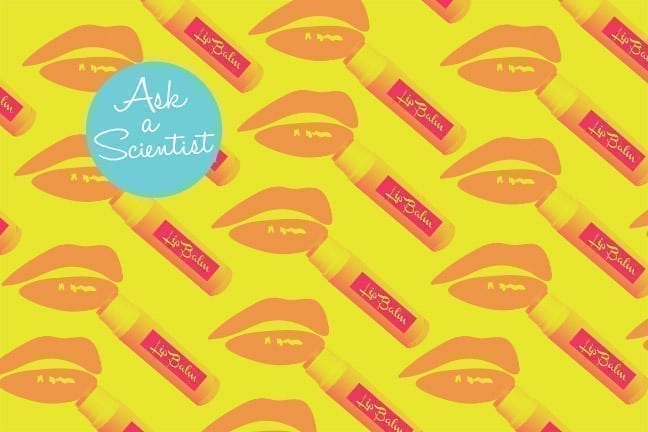The Scientist: Marc Glashofer, M.D., a dermatologist and skin cancer surgeon practicing in New York and a fellow of the American Academy of Dermatology and the American College of Mohs Surgery.
The Answer: Technically, there is no way you can get a physiological addiction to lip balm, like you can to a drug. But the ingredients in your favorite chapped-lip-stick could be making your poor pout worse.
Generally, lip balms are petrolatum-based, or contain lanolin, wax or silicone that work to seal in your lips, helping them retain their natural moisture while also making them feel smoother.
No problem there. Some also throw in extra ingredients, such as fragrances, preservatives, phenol, menthol and camphor. The latter three give that tingly sensation that it’s really doing something. Well, it might be doing something counterproductive. While some people deal fine with these ingredients, other people get a negative reaction, contact dermatitis, that can lead to cracking and drying—exactly the things they were trying to combat. Cue vicious cycle.
Love the tingle of mint or cinnamon? Then you might be doing more harm then good. Look for potential irritants on the label: camphor, menthol, phenol, cinnamon or any other fragrance or flavor, or formaldehyde, which is a preservative that is harmless at low concentrations* but sometimes irritating. It’s also released from other preservatives, including quaternium-15, 2-bromo-2-nitropropane-1, 3-diol, imidazolidinyl urea and diazolidinyl urea, so stear clear of those, too. To be 100 percent sure there’s nothing to exacerbate dryness, stick to Aquaphor or plain old Vaseline petroleum jelly.
Finally, you might just be hooked on the way a newly balmed lip feels. If so, anything less than silky feels rough—even if it’s normal.
READ MORE: Some Alcohols in Products Are Moisturizing, Not Drying
*Editor’s Note: Formaldehyde is a known carcinogen when inhaled. The Campaign for Safe Cosmetics states that cancer risks from ingesting or absorbing it through the skin are not well studied in humans. The Cosmetic Ingredient Review safety board reports that the preservative is not harmful below a concentration of 0.2% and recommends that cosmetics contain no more than this amount. Although there is no regulation on the amount of formaldehyde allowed in cosmetics in the U.S. as there is in Europe and Canada, it is highly unlikely that manufacturers here will exceed this limit.




































